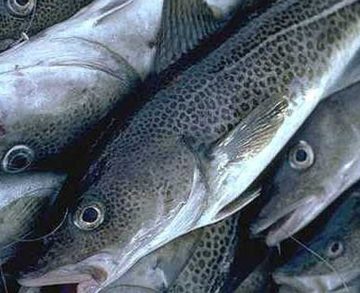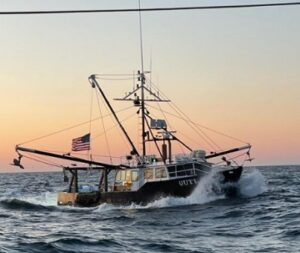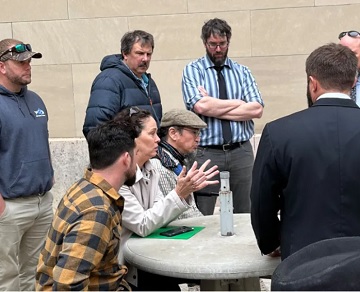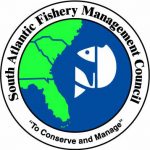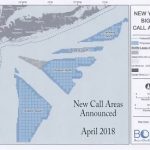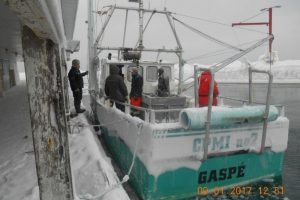Tag Archives: Catch Shares
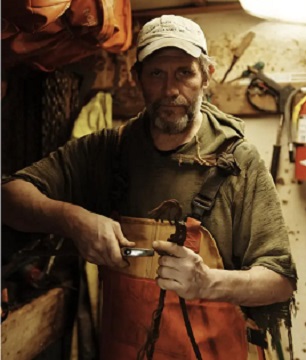
How foreign private equity hooked New England’s fishing industry
The 85-foot trawler, deep green and speckled with rust, was returning from a grueling fishing trip deep into the Atlantic swells. As sunrise broke over New Bedford harbor, the fish were offloaded in plastic crates onto the asphalt dock of Blue Harvest Fisheries, one of the largest fishing companies on the East Coast. About 390 million pounds of seafood move each year through New Bedford’s waterfront, the top-earning commercial fishing port in the nation. Leeman and his crew are barely sharing in the bounty. On deck, Leeman held a one-page “settlement sheet,” the fishing industry’s version of a pay stub. Blue Harvest charges Leeman and his crew for fuel, gear, leasing of fishing rights, and maintenance on the company-owned vessel. Across six trips in the past 14 months, Leeman netted about 14 cents a pound, and the crew, about 7 cents each — a small fraction of the $2.28 per pound that a species like haddock typically fetches at auction. Photos, >click to read< 12:04
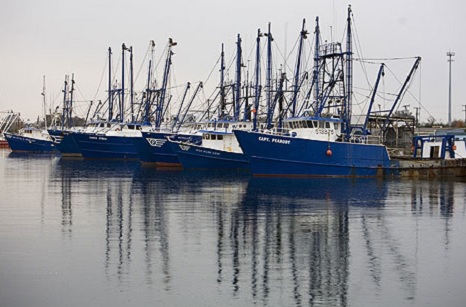
Untangling catch shares with Lee van der Voo – Catch shares have changed fisheries and fishing communities across the U.S.
I recently saw some great reporting by the New Bedford Light and ProPublica about how the billionaire Dutch family that owns Blue Harvest Fisheries has emerged as a force in groundfish fishing off the coast of Massachusetts. These are very wealthy, powerful equity groups and corporations that are acquiring access to the fisheries and passing the cost of owning them and fishing them onto fishermen. There’s been profound disenfranchisement of people who used to have a more personal stake in fishing and seafood. Everyone from indigenous communities in Southwest Alaska whose history with halibut goes back to the beginning of time to small-boat, family operations around the United States everywhere have been losing access. Whole communities have fallen apart over that. >click to read< 08:15

Catch Shares Enable Wealthy Landlords to Gobble Up Local Fisheries
A recent investigative report has reignited public discussion over catch shares, a controversial approach to fisheries management that privatizes the rights to fish. The investigation exposed how Blue Harvest Fisheries, owned by a billionaire Dutch family, became the largest holder of commercial fishing rights in New England, benefiting from lax antitrust regulations and pilfering profits from the local fishermen who work under them. As a commercial fisherman in Mississippi, I know these dynamics go well beyond New England. Here in the Gulf of Mexico, private equity firms and other large investors have come in and gobbled up the rights to fish, driving up the cost of fishing access and making it prohibitively expensive for fishermen like me to harvest fish in our own backyards. >click to read< 07:55
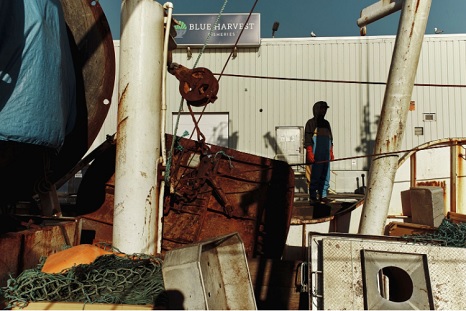
Senators Demand Federal Scrutiny of Private Equity’s Incursion Into Fishing
Three U.S. senators, including two members of a Senate subcommittee that oversees the fishing industry, are calling for greater federal scrutiny of private equity’s incursion into East Coast commercial fishing. The ProPublica/New Bedford Light investigation found that a federal regulatory system known as “catch shares,” which was adopted in 2010 to reduce overfishing, has fostered private equity’s consolidation of the industry at the expense of independent fishermen. The single largest permit holder in the New England groundfish industry is Blue Harvest Fisheries, which has rights to catch 12% of groundfish, approaching the antitrust cap of 15.5%. The current antitrust cap “fails to prevent excessive consolidation in the fishery,” said Geoff Smith, one of 18 members of the New England Fishery Management Council, which advises NOAA. >click to read< 10:23
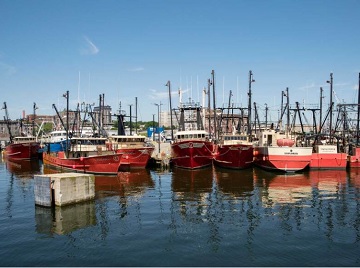
Investigation reveals private equity firms dominate the New Bedford fishing industry
A debate is raging in the local scallop industry about whether fishermen should be allowed to lease their permits. Supporters say the proposal could help fishermen with a small catch share, or those who can’t get out to sea, stay in the business, because they could lease their permit to another captain. Opponents worry it would allow big companies to consolidate the industry and push small fishermen out, similar to what has happened in the groundfishing industry. CAI’s Kathryn Eident talked with Will Sennott, a reporter with the New Bedford Light, about his investigation into permit leasing in the groundfishing industry, and how he found that some of the biggest winners are multinational private equity firms, not small fishermen. >click to read< 16:21
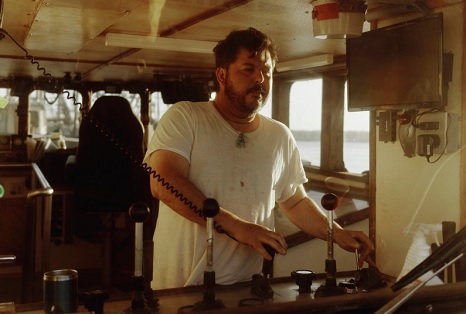
How Foreign Private Equity Hooked New England’s Fishing Industry
Before dawn, Jerry Leeman churned through inky black waters, clutching the wheel of the fishing vessel F/V Harmony. The 85-foot trawler, deep green and speckled with rust, was returning from a grueling fishing trip deep into the Atlantic swells. Leeman and his crew of four had worked 10 consecutive days, 20 hours a day, to haul in more than 50,000 pounds of fish: pollock, haddock and ocean perch, a trio known as groundfish in the industry and as whitefish in the freezer aisle. Leeman and his crew are barely sharing in the bounty. On deck, Leeman held a one-page “settlement 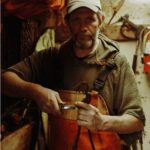 sheet,” the fishing industry’s version of a pay stub. Blue Harvest charges Leeman and his crew for fuel, gear, leasing of fishing rights, and maintenance on the company-owned vessel. Across six trips in the past 14 months, Leeman netted about 14 cents a pound, and the crew, about 7 cents each — a small fraction of the $2.28 per pound that a species like haddock typically fetches at auction. >Photos, click to read< 08:01
sheet,” the fishing industry’s version of a pay stub. Blue Harvest charges Leeman and his crew for fuel, gear, leasing of fishing rights, and maintenance on the company-owned vessel. Across six trips in the past 14 months, Leeman netted about 14 cents a pound, and the crew, about 7 cents each — a small fraction of the $2.28 per pound that a species like haddock typically fetches at auction. >Photos, click to read< 08:01
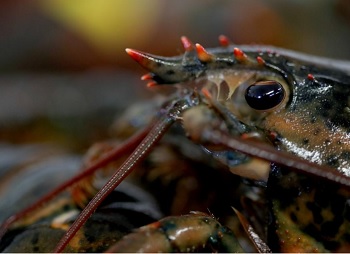
Long a lifeblood, South Shore fishing industry faces numerous challenges
Over his more than five decades fishing commercially, Frank Mirarchi has watched the business evolve from thriving and straightforward to complicated and diminished, with skyrocketing costs, foreign competition and changing regulations choking an industry synonymous with the South Shore. In the late 1960s, when he purchased his first of three successive boats, fish was abundant enough to make a solid living off of. “By 1985 or so, fishing was pretty bad,” Mirachi said. With profits dropping, he switched from having two other crew members to one. In 1994, the federal government stared limiting the number of days fishermen can be on the water to combat overfishing. Before, some spent 200 or more days fishing each year. Over the years, it was gradually reduced to 30. Mirarchi said this “wasn’t particularly successful”,,, >click to read< 08:54
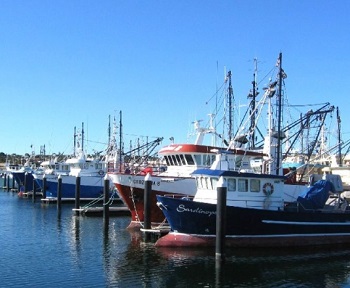
South Australia West Coast fishers reeling from priority species quota ITQ
Fishers on South Australia’s West Coast fishers who have invested hundreds of thousands in boats and licences since 2016 say they have received new quotas that only allow them to catch 87 kilograms of priority species annually. The State Government is rolling out what it calls individual transferable quotas (ITQs), part of its controversial Marine Scalefish Fishery,, for those with a catch history prior to 2016, particularly West Coast fishers where the average age was between 55 and 60, the formula was effectively a “golden handshake” to sell their quota and exit the industry. But he said it was anything but for younger fishers who bought into the industry after mid-2016,, Mr Schmucker said the industry would be “divided” as young operators scrambled to find another $150,000 to buy more quota while simultaneously competing with investors who were snapping up relinquished ITQs. >click to read< 09:10
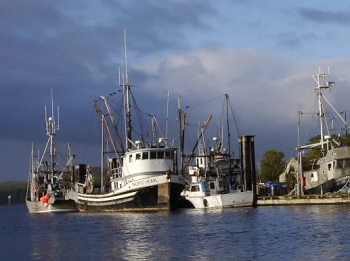
B.C. harvests 196,000 tonnes of fish a year. Most of it is exported and that’s a problem
There are about 4,000 fish harvesters scattered across the province who harvested about 196,000 tonnes of wild seafood in 2018, worth $476 million, everything from salmon to crab to geoducks. Most of that seafood didn’t stay in Canada. The province exports all but about 15 per cent of its annual catch each year and, like most of Canada, imports between 70 and 90 per cent of the seafood British Columbians eat, according to federal data. The licensing policies that give fish harvesters the right to fish the B.C. coast have privatized access to seafood and put them on the open market. >click to read< 07:50
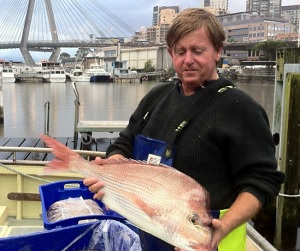
‘Nothing good in this reform’ – Controversial fishing reforms in NSW – More debt, less certainty
A long-awaited report has found the New South Wales Government’s sweeping fishing industry reforms, which were supposed to solve major structural problems, have plunged fishermen into debt and business insecurity. The number of commercial fishermen dropped from a high of 3,500 in the 1980s to 1,100 prior to the reforms, and 300 have left since. In 2016, the NSW Government tried to address the overallocation of fishing licences during the 1990s and early 2000s, to prevent overfishing, and restore the sector to profit. The Business Adjustment Package (BAP) was designed to 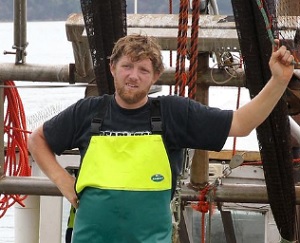 help inactive or older fishermen retire their licences. >click to read< 12:54
help inactive or older fishermen retire their licences. >click to read< 12:54
A page with a lot of posts on the NSW Government Fishery Reforms, such as Catch Shares New South Wales Style – Half the Small Boat Fishermen will disappear, >click to read<
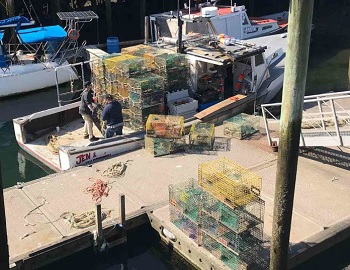
The Lunacy of Global Seafood Supply Chains
Like all global supply chains right now, this one feels unstable and unsustainable. Most of the seafood we eat in America, even in Gloucester, the country’s oldest seaport, comes from overseas. Most of what local fishermen catch is sent elsewhere. “The models aren’t designed to feed local and regional markets,” Tolley says. Those famous fish sticks bearing the logo of a Gloucester fisherman? By the time they reach your frozen foods section, they’ve made an exhausting global journey, exported for processing, then reimported. Nearly 500 commercial boats fished out of Gloucester a decade ago. Today, there are two dozen. This reflects both the decades-long collapse in groundfish stocks—the cod and haddock that once abounded in the cold waters off Cape Ann—and ever-more-aggressive federal measures limiting who can fish and for how much. >click to read< 09:07
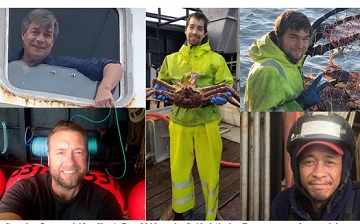
In Alaska, commercial fishing remains dangerous despite increased safety measures
Commercial fishing was once the most dangerous job in the country, (Scott Wilwert said, and during the 1970s and 1980s an increase in accidents and deaths ultimately led to the passage of the Commercial Fishing Industry Vessel Safety Act of 1988. The regulations required boats to have survival suits and life rafts and to carry out onboard safety drills, among other safety measures.,, “There was a time in the ’70s and ’80s where, I think, even the fishermen would tell you that there was a mentality, that ‘you have to go out but you don’t have to come back’ kind of thing,” Wilwert said. “That just doesn’t exist, nobody thinks that way anymore.” >click to read< 07:29

Have you had enough?
Since its inception in 1976, the agency charged with managing our fisheries, the NMFS, has overseen their decline, a decline which in most cases was a product of their own machinations.Usually most ideas the government has for managing our lives are well intended but terribly executed, this was a prime example. NMFS, for all that it was intended to be and do for our fisheries, has failed and in some cases, this wasn’t by mistake, but by design. By John Rice, >click to read< , and the comment venue is open there! 13:37

13 years ago, the Nature Conservancy desperately wanted to protect groundfish. Now it wants you to eat them
In 2006, the crash of the groundfish population — bottom-dwelling fish like petrale sole, chilipepper rockfish and sand dabs that used to be common on Bay Area tables — led the Nature Conservancy to buy up 13 fishing permits and some California fishermen’s vessels. The state worked with a handful of the state’s remaining groundfish trawlers to change how they fish and protect vulnerable habitat. Now that groundfish populations have rebounded, the Nature Conservancy wants the public to know they’re OK to eat again. >click to read< (if you don’t get propaganda sick) 10:27
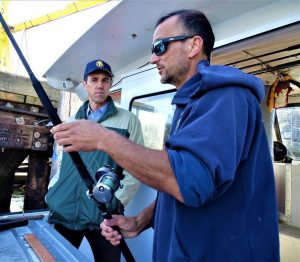
New England Fishmongers say catch shares are driving them out of business
If things can’t turn around for Capt. Tim Rider, the owner of New England Fishmongers, he and his business partner will be out of business at the end of this month.,,, Beto,,, The biggest economic hurdle for Rider, who still uses a rod and reel to bring in most of his fish, is catch shares. That’s when part of a share of a species of fish is allocated to individual fishermen or groups. In most cases, fishermen or groups can buy or sell or lease shares. “Someone owns the rights to the fish and can sell the rights to the highest bidder,” >click to read< 18:40
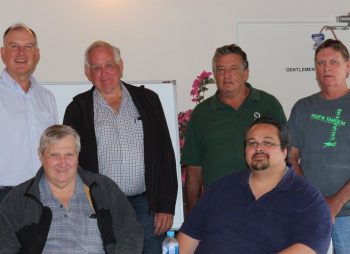
Come on Queensland, it’s your future.
Last week the Queensland Seafood Industry Association (QSIA) met for their Annual General Meeting in Tin Can Bay.,, It is an industry in turmoil following the recent recommendations proposed by the Department of Agriculture and Fisheries that the Trawl Fishery be locked into five zones and only by leasing or buying from other operators, can you enter other zones to work.,,, Blindsided by The Hon. Mark Furner,,, While claiming to be effecting reforms proposed by MRAG they are picking the worst bits out and these changes are unprecedented in the history of the industry. >click to read< 16:22
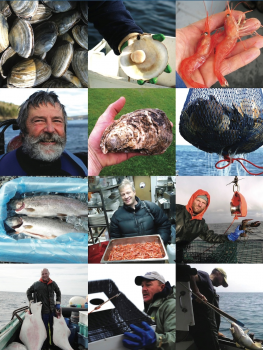
The Global Ocean Grab – Fishing Rights: We can still help save our BC fishing communities!
The sea is an open space that, beyond coastal waters, does not belong to any particular nation or group. People have been harvesting food directly from the sea since time immemorial and the oceans are a resource that belongs to all humanity. Unfortunately, in the age of globalization, the management of this shared heritage of limited resources is based on legal frameworks that undermine small-scale fishers and community management systems while reinforcing the disproportionate power of corporations and other private actors. One of these “legal” mechanisms involves reallocating access to fishing rights and quotas to increase economic efficiency, but this model is very weak in regards to conservation and ensuring equity and social justice. >click to read< 10:42
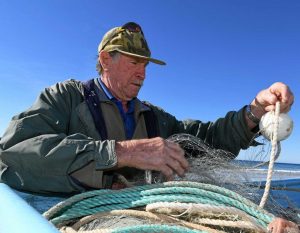
Catch Shares – Veteran commercial fishers fear the worst for industry
Third generation fisherman Kevin Cannon has been net fishing on the Coast for 55 years, but is “demoralised” that a quota system proposed for the region’s popular species. Mr Cannon said flathead, bream, whiting, taylor and barramundi – “bread and butter” fish – were all some of the species included which would de-value his licence by “up to 60 per cent”. Agricultural Industry Development and Fisheries Minister Mark Furner said many fisheries in Australia and around the world used the proposed system where individuals were allocated a share of the stock. (standard EDF line), “This provides security of access and allows them to plan their businesses,” >click to read< 08:51

Eric Schwaab Comes Aboard as New Head of EDF’s Oceans Program
“Eric was critical to the success we achieved during my time as NOAA Administrator,” said Dr. Jane Lubchenco, University Distinguished Professor, Oregon State University and former EDF Board Trustee. “His unflappable get-it-done approach makes him notably effective working with a range of stakeholders from fishermen to global leaders.” As head of NMFS, Schwaab led the transformation of U.S. fisheries management including widespread adoption of science-based catch limits and catch shares. EDF was a leading advocate for these reforms, which have driven a dramatic recovery of fish populations and increased catch and profits for fishermen. >click tp read<10:02
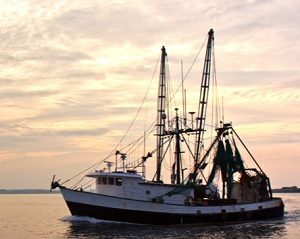
Fishing licences and quota on the West Coast are murky business
Being a commercial fish harvester is tough work. There are long hours, unpredictable seas and demanding physical conditions, not to mention the experience it takes to know where to drop the traps or cast a net..,, In the West Coast fisheries, a single licence may be exchanged for tens of thousands of dollars to hundreds of thousands of dollars, and quota transactions are worth tens of millions of dollars annually. However, the market for licences and quota is not transparent or tightly regulated.,,, As licences and quota concentrate in fewer hands they become out of reach for active harvesters. In turn, the socioeconomic fabric of Indigenous and coastal communities stretches and strains. A recent study by the Parliamentary Standing Committee on Fisheries and Oceans comes to similar conclusions. >click to read<16:31
Analysis of Commercial Fishing Licence, and Quota Values – As at December 31, 2016 Prepared for Fisheries and Oceans Canada, Pacific Region >click to read<

How to wreck an industry – Catch shares lead to consolidation of Alaskan fisheries
A recent study documenting consolidation and specialization in Alaska’s fisheries over the past three decades illustrates a broader trend taking hold in coastal communities across the country. Catch share programs, a new fisheries management system, are turning fishing rights into tradable commodities, driving up the cost to fish and consolidating fishing rights into the hands of a few wealthy owners. For instance, in Alaska’s Bering Sea crab fishery, just four companies own 77 percent of the rights to fish a single crab species. >click to read<11:30
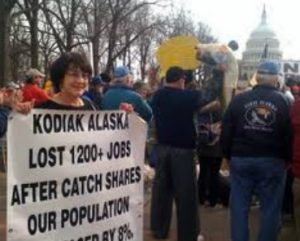
Our coastal communities are drowning, largely thanks to tradable quotas and licences.
British Columbia’s coastal communities, long dependent on fishing for their livelihoods, are in serious trouble: population down, youth retention down, incomes down, investment down, infrastructure down, health and well-being down. It’s now almost impossible for young people to enter the fishery because of the high cost of purchasing or leasing the Individual Transferable Quotas (ITQs) attached to most fishing licences. ITQs are permits to catch a certain quantity of fish, and can be freely traded or leased. Coastal communities that used to have dozens of fishermen now may have a handful at best. The boatbuilding, repair, and gear supply businesses are likewise disappearing. How did this happen to our once prosperous coast? East Coast, best coast?>click to read<12:32
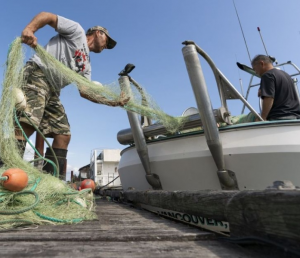
Sweeping reforms to licences, quotas, and equal footing, Standing Committee urges massive overhaul
The committee is recommending sweeping changes to the way commercial fishing licences and quota are owned in B.C. to address concerns of monopolization — including quota ownership by foreign investors who might never have set foot on a fishing boat or in Canada — that has turned commercial fishing in B.C. into “a modern day feudal system.” While commercial fishermen in B.C. applaud the committee’s recommendations, it may not sit well with corporate owners such as Jimmy Pattison’s Canadian Fishing Company, which owns a significant amount of fish quota in B.C. >click to read<12:55
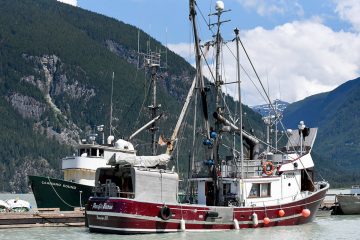
North Coast leaders celebrate report’s focus on independent fishers
North coast leaders are calling the sweeping recommendations of a Parliamentary committee a win for independent fishers. The all-party Standing Committee on Fisheries and Oceans released its study on the state of the West Coast fisheries May 7, recommending numerous changes to the Fisheries Act that aim is to lower financial barriers for those wanting to enter the profession, and limiting the number of licences held by any single group.,,, Bill C-68, adopted in June of last year, paved the way for an overhaul of the Fisheries Act, whereby the ministry considers not only ecology in its decisions, but the social and economic impacts on the communities dependant on the fishery. >click to read<19:39
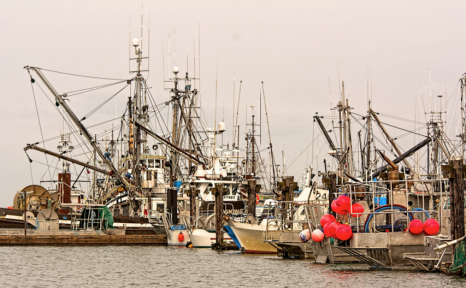
Sweeping reforms to West Coast fisheries recommended
Canada’s West Coast fishery could be in for a sea change, if Parliament accepts and implements 20 recommendations being made by the Standing Committee on Fisheries and Oceans.,,, recommending sweeping changes to the way commercial fishing licences and quota are owned in B.C.,,, including quota ownership by foreign investors who may never have set foot on a fishing boat or in Canada – that has turned commercial fishing in B.C. into “a modern day feudal system.” “The direction that the industry is going is driving the independent harvester – the small boat fisherman, the Ma and Pa operations – out of business on the coast.” The ownership of licences and quota in B.C. is different from Atlantic Canada and Alaska, where the people who do the fishing – commercial boat owners – tend to own the licences and quota. >click to read<23:14
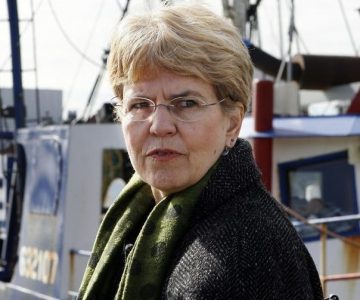
Privatize – Eliminate – Consolidate – Gloucester groundfish sectors consolidate
The decline of the region’s commercial groundfish industry has claimed another casualty — Gloucester-based Northeast Fishery Sector III. The sector, one of two Gloucester-based groundfish sectors within the original 16 commercial groundfish sectors approved by NOAA Fisheries in the 2010 transition to catch shares, will be deactivated for the upcoming 2019 fishing season. The reason: its exhausted roster of vessels and permits won’t financially support an active sector. >click to read<21:44
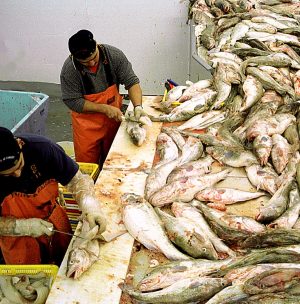
NPFMC takes first step toward rationalizing P-cod fishery
Pacific cod fishermen in the Bering Sea and Aleutian Islands, one of the last remaining unrationalized federal fisheries in Alaska, may finally have to cross that bridge. The North Pacific Fishery Management Council passed a motion at its meeting Feb. 9 to take action on the Pacific cod fishery, which is facing a number of issues in abundance, processing and participation. Depending on public review and the council’s action at the next several meetings, the Pacific cod fishery could see significant changes to seasons, limits and vessel participation. The motion hinges around an analysis developed on the trawl catcher vessel fishery and releases Alternatives 1, 2, 3 and 6 for public review separate from the rest. Rationalization, also known as catch shares,,, >click to read<






